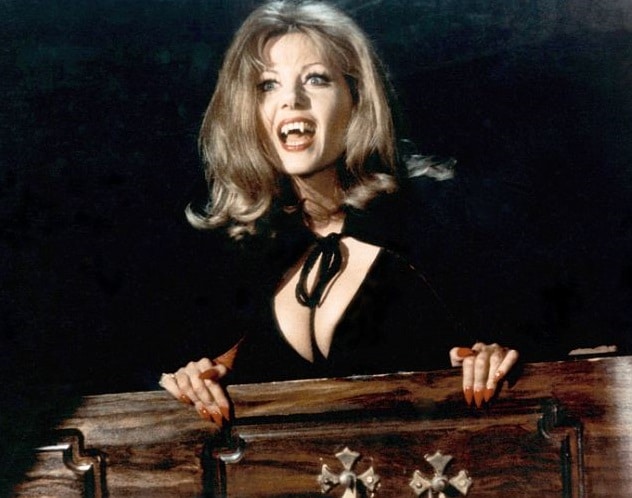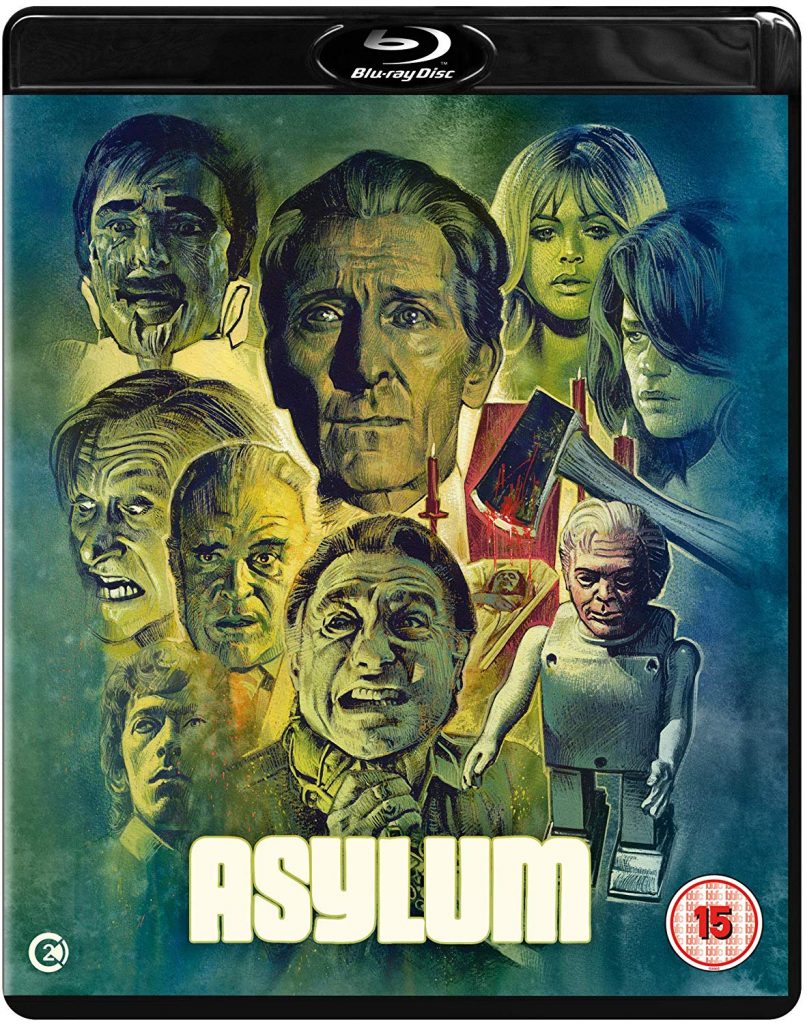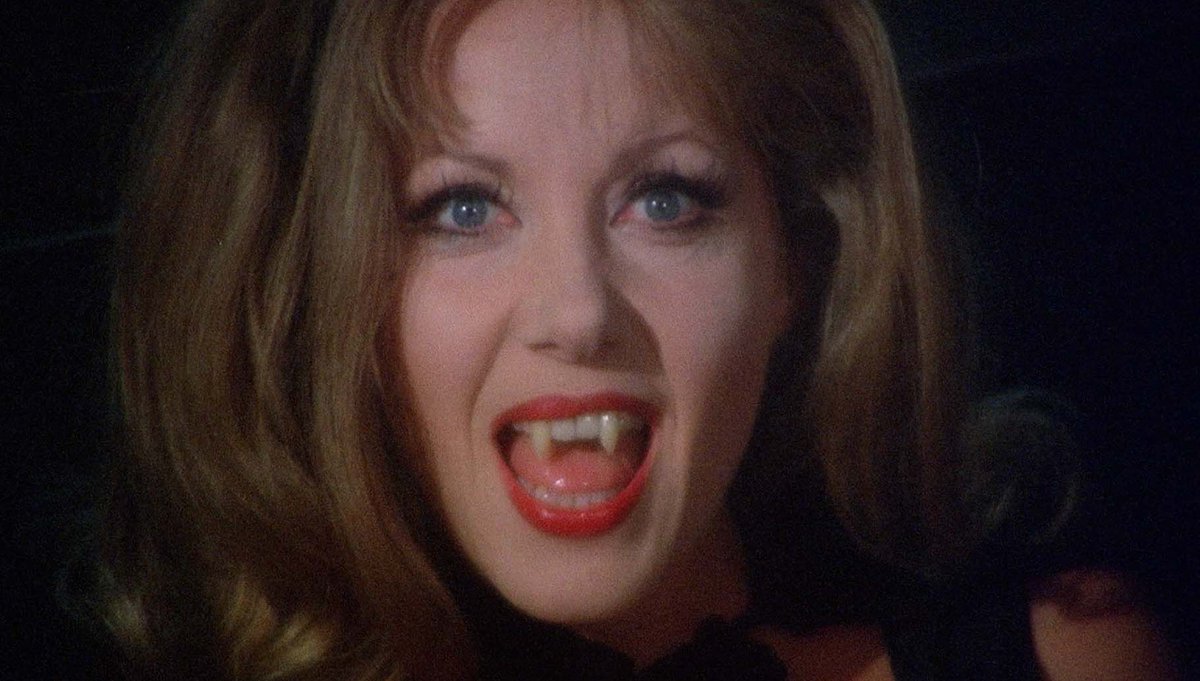
It’s easy to overlook the American contribution to the good old days of British horror. Take Amicus Productions: much as we think of them as a British institution, they were in fact run by a duo of American producers, Milton Subotsky and Max J. Rosenberg. On top of which, several of the most esteemed Amicus films were American in origin by virtue of the source material: notably EC Comics (in Tales from the Crypt and The Vault of Horror), and the writing of Robert Bloch. While Bloch is and will always be most remembered for writing the novel which served as the basis for Alfred Hitchcock’s Psycho, he was a prolific jobbing writer cranking out vast scores of short stories for the pulp magazines from the 30s onward, and in the 60s made the move into writing for TV and film. After Amicus adapted Bloch’s story The Skull of the Maquis de Sade into their 1965 film The Skull, Subotsky and Rosenberg developed a closer relationship with the author, having him write a number of screenplays for them, the most notable of which were the company’s signature anthology horror movies.
Bloch dipped into his own back catalogue and adapted some of his short stories for the screen, first in 1967’s Torture Garden, and later in the two films up for discussion here: 1971’s The House That Dripped Blood, and 1972’s Asylum, both of which have been brought to Blu-ray by Second Sight (first in lavish limited edition steelbooks earlier this year, and now in simpler, more affordable standard pressings).

Reportedly the main advice Subotsky would give Bloch on beginning his screenplays was what the film’s framing mechanism would be, then the writer would have a fair degree of independence to pick which of his own stories might fit that conceit. In the case of The House That Dripped Blood, the key thing linking the tales is – wouldn’t you know it – a house, which is being investigated by the curmudgeonly Inspector Holloway (John Bennett) following the disappearance of a famed screen actor (Jon Pertwee) who had been living there. On digging into the history of the house – which, naturally, is handled by a letting agent named Stoker (John Bryans) – the sceptical copper finds himself confronted with four increasingly absurd tales of terror said to have taken place there. We have Denholm Elliot (hilariously described as one half of a ‘young couple’) as a horror writer who seems to find his own creation coming to life within the walls; Peter Cushing as a lonely old bachelor who, on venturing to the town nearby, believes he’s found the lost love of his life reborn as a figure in a wax museum; Christopher Lee, as a stern single parent who may have good reason to live in fear of his own infant daughter; and finally the aforementioned Pertwee as a movie star renting the house whilst shooting a vampire film, who finds himself getting perhaps a little too immersed in his role.
Asylum, meanwhile, sees another sceptic arrive in another house of ill repute (no, not one of those… oh, you know what I mean), in this instance Robert Powell as a young, principled psychiatrist under consideration for a position at a mental institution, where part of the interview process is for him to give his professional opinion on the cases of four inmates whose stories, if you can believe it, seem to defy all sense and reason: a young woman (Barbara Parkins) who had plotted with her lover to murder his wife, before events took an unforeseen turn; an elderly tailor (Barry Morse) who believes his last suit took on supernatural powers; another young woman (Charlotte Rampling) who seems haunted by an imaginary friend; and a doctor (Herbert Lom) who builds miniature figures which he believes he can imbue with life.

The appeal of both these films to fans of classic horror of the 60s and 70s should be readily apparent. For one, we have several of the most beloved horror actors making an appearance, with Cushing in both and Lee in one. The House That Dripped Blood is also highly notable for featuring Ingrid Pitt in what is in many ways her most iconic performance; who knows how many times the above image of her from this film – all fangs and cleavage – has been mistakenly used in articles discussing The Vampire Lovers and/or Countess Dracula. Two other key things to note there; firstly, as memorable as Pitt may be, it’s Jon Pertwee’s hilarious performance as an ostentatious ham actor that really wins that segment; secondly, the story in question -The Clock, to use its official title – is actually quite incongruous in its comedic approach, with the remainder of the stories being played with a largely straight face. Not that the humour of The Clock in any way undermines what went before. The House That Dripped Blood was the first film credit (and one of only a few) from seasoned TV director Peter Duffell, and he does a fine job, serving up some very atmospheric sequences, and making good use of the eye-catching settings.

Asylum boasts another notable horror legend, this time behind the camera in director Roy Ward Baker, making his Amicus debut after taking the helm on a slew of Hammer greats (Quatermass and the Pit, The Vampire Lovers and Doctor Jekyll and Sister Hyde, among others). The cast is also notable; as well as old legends Cushing and Lom, we have early turns from future greats Powell and Rampling, and one of the better performances ever seen from Britt Ekland. Special mention is also due to the often overlooked Geoffrey Bayldon, who has supporting turns in both films but particularly steals the show in Asylum; who knew Catweazle could be quite so sinister, eh?
Like the previous film, the stories in Asylum are for the most part played largely straight, and Baker, obviously a dab hand at this sort of thing, presents it all beautifully and serves up some nicely suspenseful moments in that old-fashioned way. Indeed, it’s worth emphasising that, while both The House That Dripped Blood and Asylum were products of the more permissive 1970s, neither film chooses to amp up the sex and viscera as Hammer tended to do at the time, preferring more traditional, largely bloodless scare tactics; indeed, I’m half surprised Asylum was deemed worthy of a 15 by today’s standards.
Second Sight have been doing a great job of late creating collector-worthy editions of sometimes overlooked cult films, and these Blu-rays are a fine example of that, with both films looking and sounding terrific, and plenty of enjoyable extras on both discs, including both vintage and contemporary featurettes and director’s commentary tracks recorded when both Baker and Duffell were still with us.
The House That Dripped Blood & Asylum are released to Region B Blu-ray on 6th January 2020, from Second Sight.
